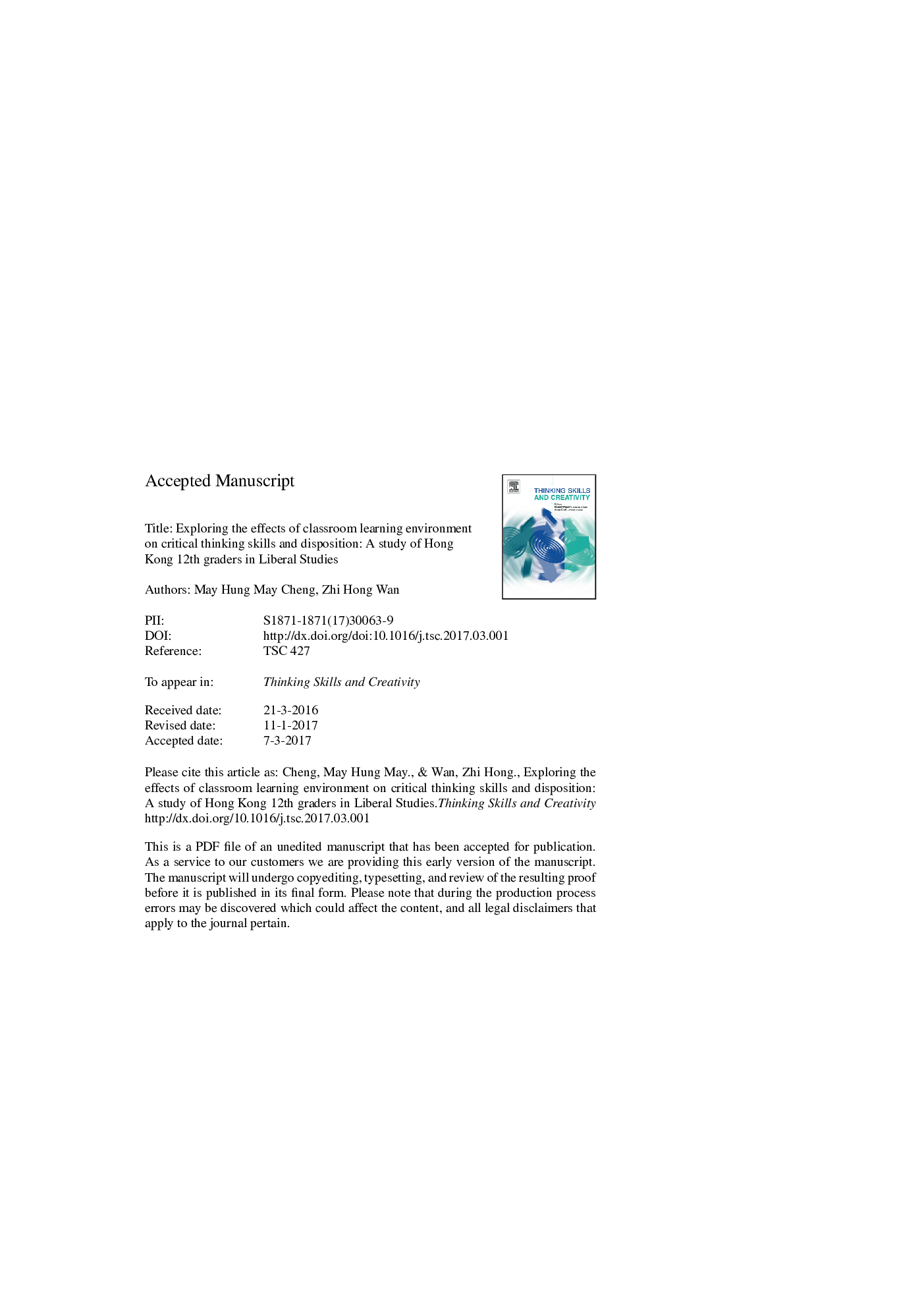| Article ID | Journal | Published Year | Pages | File Type |
|---|---|---|---|---|
| 4941862 | Thinking Skills and Creativity | 2017 | 40 Pages |
Abstract
This study explored the effects of the classroom learning environment of a Liberal Studies course on the critical thinking skills and disposition of 3869 Grade 12 students in Hong Kong. Through combining both exploratory and confirmatory factor analyses, a two-level model of the classroom learning environment for critical thinking with seven dimensions (i.e., Student Negotiation, Challenging Task, Multiple Perspectives, Shared Control, Skeptical Voice, Uncertainty and Personal Relevance) at the first level and three broader aspects (i.e., Pedagogy, Relationship and Content) at the second was generated. The correlation and structural equation modelling analyses indicated that the classroom learning environment had a stronger relationship with critical thinking disposition than skills. Structural equation modelling analysis also indicated a mediation effect of critical thinking disposition between the classroom learning environment and critical thinking skills. It is suggested that different approaches be combined so as to achieve a balanced development of students' critical thinking skills and disposition.
Related Topics
Social Sciences and Humanities
Psychology
Developmental and Educational Psychology
Authors
May Hung May Cheng, Zhi Hong Wan,
